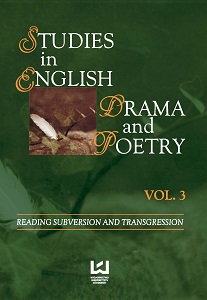Damsels and Demons: Transgressive Females from Clarissa to Carmilla
Damsels and Demons: Transgressive Females from Clarissa to Carmilla
Author(s): Agnieszka Łowczanin
Subject(s): British Literature
Published by: Wydawnictwo Uniwersytetu Łódzkiego
Keywords: Damsels and Demons;transgressive females from Clarissa to Carmilla
Summary/Abstract: Stories featuring female vampires transgress moral boundaries and subvert the cultural allocation of gender. The purpose of this paper is to look at the first Victorian example of such a story, “Carmilla” by J. S. Le Fanu, and see its ambiguous presentation of female characters and sexuality from the perspective of the literary delineation of women in the early eighteenth-century and later gothic novels, thus demonstrating their continuity in the depiction of both female subjugation and self-assertion, but also inadequacy of gender distinctiveness. Defoe’s and Richardson’s novels feature strong, assertive women who subvert moral, class and gender codes. Their “unfeminine” resourcefulness, obduracy and determination to follow their own will clash with patriarchal expectations of subservience and ultimately lead to their victimisation. Distressed, but not defeated, these characters anticipate the arrival of gothic “damsels in distress” who move in a world similarly populated by villains who similarly prevail and transgress conventional representations of gender. “Carmilla” likewise features controlled female characters juxtaposed with the empowered ones. The strength and twist of the story lie in the presentation of women who, bowing to patriarchy, deceive and subvert its solidity by acknowledging female sexuality and demonstrating its endurance, permeating the crust of Victorian male respectability.
Book: Studies in English Drama and Poetry vol. 3. Reading subversion and transgression
- Page Range: 189-199
- Page Count: 11
- Publication Year: 2013
- Language: English
- Content File-PDF

